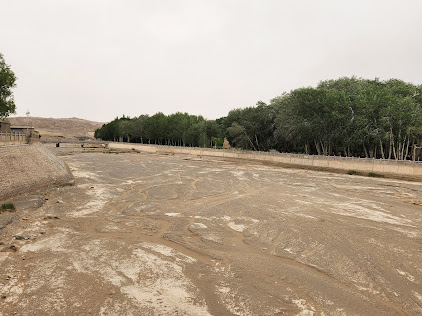When the Xinjiang tour was first introduced to me, it was the inclusion of Dunhuang in the itinerary that ultimately tipped the scales and convinced me to sign up. While Dunhuang may not possess the same mythical allure as Machu Picchu, its profound historical significance - shaped and layered over thousands of years in this once remote and desolate frontier - is equally captivating and well worth a visit. This ancient city, once a vital crossroads of the Silk Road, offers a fascinating glimpse into a rich tapestry of cultures, religions and civilizations that have left their mark on its sands.
Dunhuang Caves also known as Mogao Caves are located 25Km southeast of Dunhuang city, at the edge of the Gobi Desert, along the ancient Silk Road. According to historical records, the first cave was carved by the Monk Le Zun during the Northern Liang Dynasty (4th century AD). Over the next millennium, more than 700 caves were carved out and decorated with Buddhist art.
These caves gained international prominence in 1900 when Wang Yuanlu, a Taoist monk and self-appointed guardian of the site, discovered the "Library Cave" (Cave 17). This hidden chamber contained over 50,000 ancient manuscripts, sutras, paintings and artifacts dating from the 4th to the 11th centuries. The texts written in Chinese, Sanskrit, Tibetan, Uighur and several other languages provide invaluable insights into religious, cultural and social life along the Silk Road. They reflect a remarkable confluence of spiritual traditions, including Buddhism, Taoism, Confucianism, Manichaeism and even Nestorian Christianity.
Following Wang's discovery, a significant portion of these manuscripts were sold to foreign explorers for modest sums. Between 1907 and 1920s, Western archaeologists and adventurers - including Aurel Stein and Paul Pelliot - acquired vast collections of these treasures, transporting them to Europe. Today, many of these priceless artifacts reside in major institutions such as the British Museum, the National Library of France and other prominent museums and libraries around the world.
In 1961, the Mogao Caves were declared a National Key Cultural Heritage Site in China, and in 1987, they were designated a UNESCO World Heritage Site.
Today, the Mogao Caves are open to the public under strict conservation guidelines, including a clear prohibition on photography inside the caves to protect the delicate murals and sculptures.
One of the highlights of our visit was an immersive digital experience inside a large, dome-shaped theatre. Here, visitors relax in comfortable seats and watch high-resolution, 360-degree films that offer stunning close-up views of the cave interiors. The films reveal intricate details of murals and statues - many are difficult to see in person due to low lighting or restricted access for preservation purposes.
Given the vast scale of the cave complex, visitors were typically guided through a selected sets of caves following the digital presentation. Common stops include Cave 96 (Tang, 7th-8th century), home to the towering 35.5m tall statue of the Maitreya Buddha - the largest sculpture at Mogao. Another highlight is Cave 220 (Tang, 7th century), renowned for its beautifully preserved murals depicting courtly dancers and musicians from the Tang period, along with several other noteworthy caves showcasing the artistic and spiritual legacy of ancient China.
Curious, I delved into some research and discovered that the nearby Dangquan River - a seasonal stream originating from the distant Qilian Mountains - once flowed past the caves, serving as the primary water source during those times. In drier months, the inhabitants likely dug wells or tapped into the underground seepage that lingered in the riverbed to sustain themselves. This precious water supply made the survival of both the settlement and the creation of the remarkable cave temples possible.
Today, modern infrastructure has taken over. Water is transported to the Mogao Caves via pipelines to support conservation efforts and to meet the needs of visiting tourists. This is crucial to ensure that this UNESCO World Heritage site is preserved for future generations.












No comments:
Post a Comment